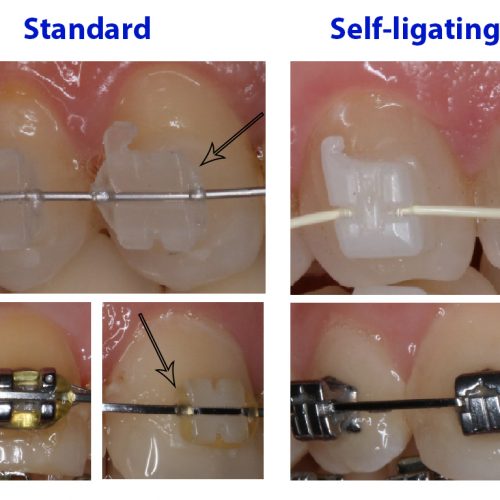Dental braces (also known as braces, orthodontic cases, or cases) are devices used in orthodontics that align and straighten teeth and help to position them with regard to a person’s bite, while also working to improve dental health. Braces can be from different materials such as metallic, plastic, gold or ceramic. Generally there are mainly 2 types of braces: standard and self-ligated. The main difference between them is the way the wire is tied to the bracket: in standard braces it is by use of elastics ties while the self ligating braces have a built in mechanism which locks the wire inside the bracket without use of elastics. This difference account to variety of different effects and mechanics between the 2 types of systems.
The most classic and standard type of braces. It is the most visible treatment method however it is also the cheapest.
Aesthetic, ceramic and/or sapphire braces are the cheapest out of all aesthetic options for teeth straightening. They are less visible than metallic braces. They may require more frequent visits to the doctor.
Self ligating braces are the next generation of braces. Their main difference compared to standard braces is that they do not require elastics to tie the wires to the brackets. This difference provides additional hygienic and effectiveness advantages over the standard option. The most commonly know self-ligating system is the Damon system.
The lack of elastics provides better hygiene control (less plaque accumulation, easier to clean and brush the teeth) , less forces to move the teeth and longer periods between visits. Moreover, the elimination of the elastics ties decrease unwanted side effects during treatment and by this provide a relatively more efficient treatment progress.
self-ligating ceramic braces in addition to all the advantages of metallic self-ligating braces, have superior esthetics when compared to standard braces as there are no yellowing of elastics between visits. However, they are slightly less effective than metallic braces and may require additional manipulations during treatment.

Most comfortable and least painful teeth straightening method. Aesthetically they are practically invisible. They fit majority of cases. However, in more complex situation they still need to be combined with other fixed appliances. It requires shorter and less frequent visits to the doctor.
These are braces which place on the inside part of teeth. Hence they are considered the most invisible teeth straightening method. They are prepared individually to each case and tooth. This method provide an invisible solution even to complex cases. However, it comes with the price of compromised comfort compared to any other treatment method.